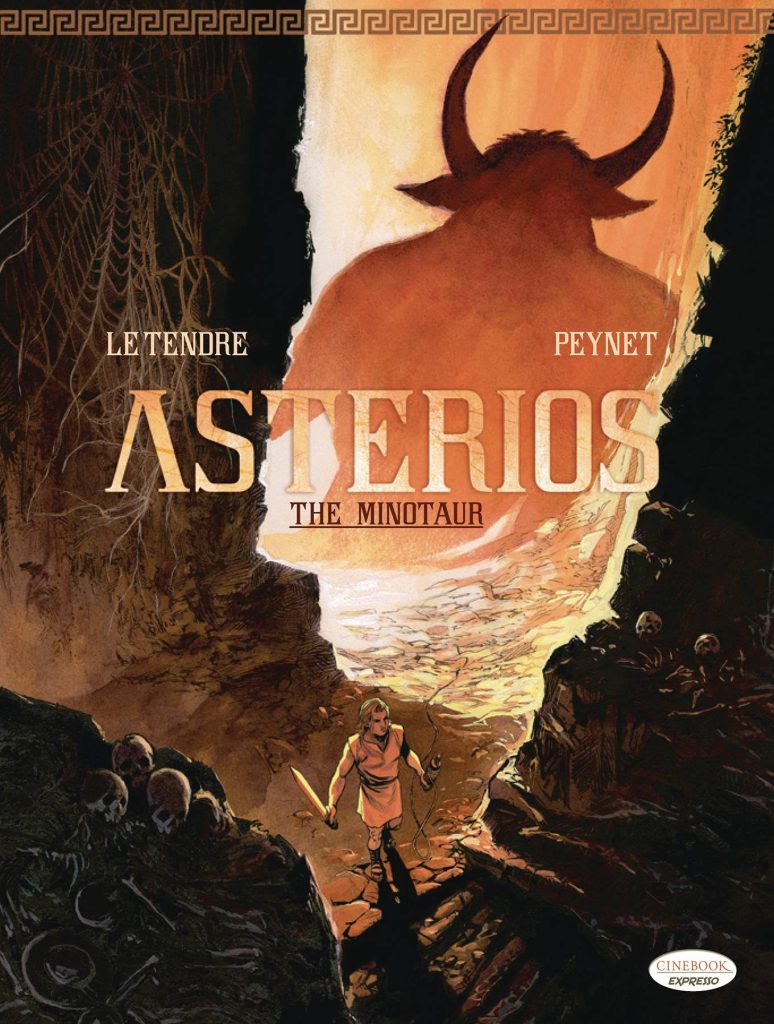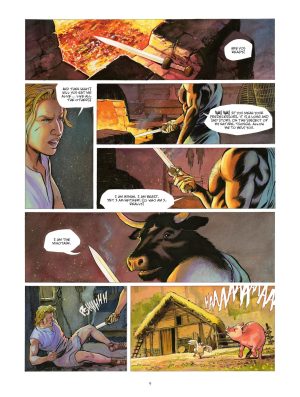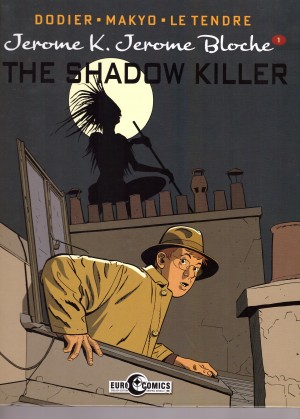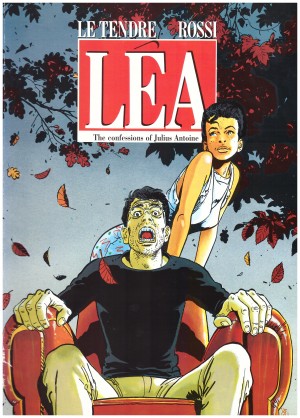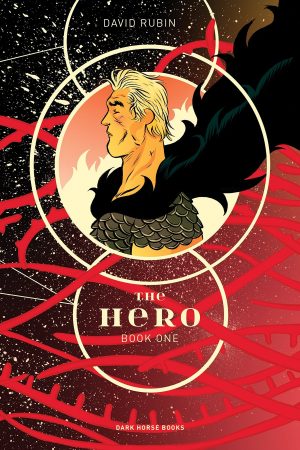Review by Tony Keen
The story of Theseus and the minotaur, the half-man half-bull of the Labyrinth of Crete, is one of the best-known tales of Greek mythology, told over and over again, in texts and in images. Unsurprisingly, plenty of graphic novels retell the myth. The original Greek versions of the story present the minotaur, whose name is Asterios or Asterion, as a savage monster, symbolic of the Other, but plenty of versions are more sympathetic to the beast, such as Jorge Luis Borges’ short story ‘The House of Asterion’. Sympathy with the minotaur is also implicit in Pablo Picasso’s drawings of it, and indeed George Watts’ 1910 painting.
It means what French writer Serge Le Tendre does in Asterios the Minotaur, now presented in English translation, is not anything particularly novel, but he does it well. He makes the reader sympathise with Asterios, while never denying the minotaur’s somewhat bestial anger.
The story begins with Asterios entertaining Theseus at the centre of the Labyrinth, and telling the Athenian hero the minotaur’s life story. Actually, that’s not completely accurate – about half of Asterios’ tale is actually the life story of Daedalus, the engineer who designed the Labyrinth for King Minos, among other achievements. Theseus himself is very much a bit player. Those familiar with the story will notice that Le Tendre has made some changes, but that’s all right; myth is infinitely retellable and malleable in its presentation.
It is a nice quick read, at only 66 pages. The story is well told, with sparse, effective dialogue, translated by Jerome Saincantin. It is a much better piece of work than we have any right to expect from a writer now aged 77.
The illustration is lovely (see sample image). Frédéric Peynet, much younger than Le Tendre, but still very experienced, draws in a clear, realistic style, with no particular clever effects. It recalls the style of art found in British and European adventure comics in the 1960s and 1970s.
There are a couple of plot beats that those familiar with the story will notice being foreshadowed, but which are not delivered upon. This may mean that Le Tendre is planning a sequel. We can but hope.
